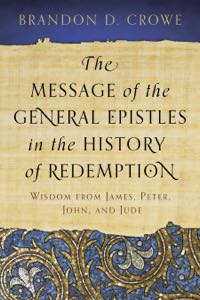Guest Blog by Brandon Crowe
The Necessity of Right Christology
Proper Christology is at the heart of Christianity. Yet Christology is consistently an area of dispute and misunderstanding. Christology therefore always requires careful articulation. Many debates about Christology today center around the question of whether Jesus is fully divine. Some may even have heard that the divinity of Jesus was a fiercely debated point among orthodox Christians well into the fourth century.
Such a claim, however, withers in the light of the evidence of the New Testament and other early Christian writings. In this brief post we will look at one passage in particular that helps us articulate a robustly biblical Christology, along with how this passage stands in continuity with early Christian tradition.
Jesus as God in 2 Peter 1:1
The first verse of 2 Peter reads:
“Simeon Peter, a servant and apostle of Jesus Christ, To those who have obtained a faith of equal standing with ours by the righteousness of our God and Savior Jesus Christ” (ESV).
Of particular interest for the issue of Christology is the phrase “our God and Savior Jesus Christ.” Is this a reference to the Father and the Son? Or is it possibly a reference only to Jesus Christ? Commentators have taken different views. For example, John Calvin saw here a reference to two divine persons (Father and Son).[1] However, a strong case can be made that one divine person is in view here: God the Son.
This is likely because of the Greek phrasing, which includes the article (tou) before God (theou), followed by “and” (kai), but no article before Savior (sōtēros). Thus, based on a tenet of Greek grammar called the Granville Sharp Rule, in a situation such as this, where one article corresponds to two singular, personal nouns combined with “and,” the statement most likely refers to the same person.[2] The identity of this person is clarified in the next phrase: it is Jesus Christ. In short, 2 Peter calls Jesus Christ “God” in the very first verse.
This reading is confirmed in the next few verses. In 1:3 we read that Jesus’s divine power provides all things pertaining to life and godliness (1:3), and in 1:4–8 we read that to participate in the divine nature means to become more and more like Christ.[3] Thus, the reading of 2 Peter 1:1 that understands “God” to refer to Jesus is supported by the argument that follows in 2 Peter.[4]
Jesus as God Elsewhere in the New Testament
To be sure, it is not common for the New Testament writers to use the term theos to identify Jesus. More often the New Testament reveals the divinity of Jesus by ascribing to him the names, attributes, works, and worship that are proper only to God (see WLC 11). Nevertheless, in a few places Jesus is explicitly identified as God. Beyond 2 Peter 1:1, one could look at John 1:1; 20:28; Rom. 9:5; Tit. 2:13; Heb. 1:8; 1 John 5:20.[5] However, it is to be emphasized that these are just the tip of the iceberg of a more wide-ranging divine Christology in the New Testament, even where the specific term theos is not used for Jesus.
Jesus as God in the Early Second Century
It is also not uncommon to read of Jesus being identified as God in non-biblical, Christian authors already by the early-to-mid second century. One prominent example is Ignatius of Antioch (likely writing in first quarter of the second century). For example, Ignatius speaks of Jesus as God explicitly in at least five passages of his brief correspondence (Eph. 1:1; 7:2; 19:3; Rom. inscr., 3:3; Smyrn. 1:1). Likewise, the author of 2 Clement (likely mid-second century) identifies Jesus as God in 12:1; 13:3–4; and perhaps 4:4. Moreover, 2 Clement opens by instructing readers to think of Jesus in every way as they would think of God (1:1).[6]
Divine Christology and the Rule of Faith
We have only scratched the surface of the depths of 2 Peter and the richness of New Testament Christology. But in light of 2 Peter’s witness to the divinity of Jesus Christ, it is striking that the so-called rule of faith (regula fidei), which arose early in the church and provided the proper guidance for reading Scripture, bears a Trinitarian character. Indeed, Irenaeus of Lyons identifies this “ruled” reading of Scripture as the apostolic way of reading Scripture (Against heresies 1.10.1; Demonstration 3–6). Thus, the statement that Jesus Christ is God in 2 Peter 1:1 is not an outlier, but is consistent with mainstream Christian belief from the earliest days of the church.
—————————————————————-
[1] John Calvin, Commentaries on the Catholic Epistles, in Calvin’s Commentaries, trans. and ed. John Owen (repr., Grand Rapids: Baker, 1999), 367.
[2] See further Daniel B. Wallace, Greek Grammar Beyond the Basics: An Exegetical Syntax of the New Testament (Grand Rapids: Zondervan, 1996), 270–72; Brandon D. Crowe, “The Trinity and the General Epistles,” in The Essential Trinity: New Testament Foundations and Practical Relevance, ed. Brandon D. Crowe and Carl R. Trueman (London: Apollos, 2016), 140, 147–48.
[3] Brandon D. Crowe, The Message of the General Epistles in the History of Redemption: Wisdom from James, Peter, John, and Jude (Phillipsburg, NJ: P&R, 2015), 57–60.
[4] “God” in 2 Peter 1:2 is most likely the Father, but the most immediate antecedent to “his divine power” in 1:3 is “Jesus our Lord” in 1:2.
[5] See Richard N. Longenecker, The Christology of Early Jewish Christianity, SBT 2/17 (London: SCM, 1970), 136–41.
[6] See Brandon D. Crowe, “Like Father, Like Son: Unraveling the Proto-Trinitarian Approach of 2 Clement,” WTJ 77 (2015): 251–64.
